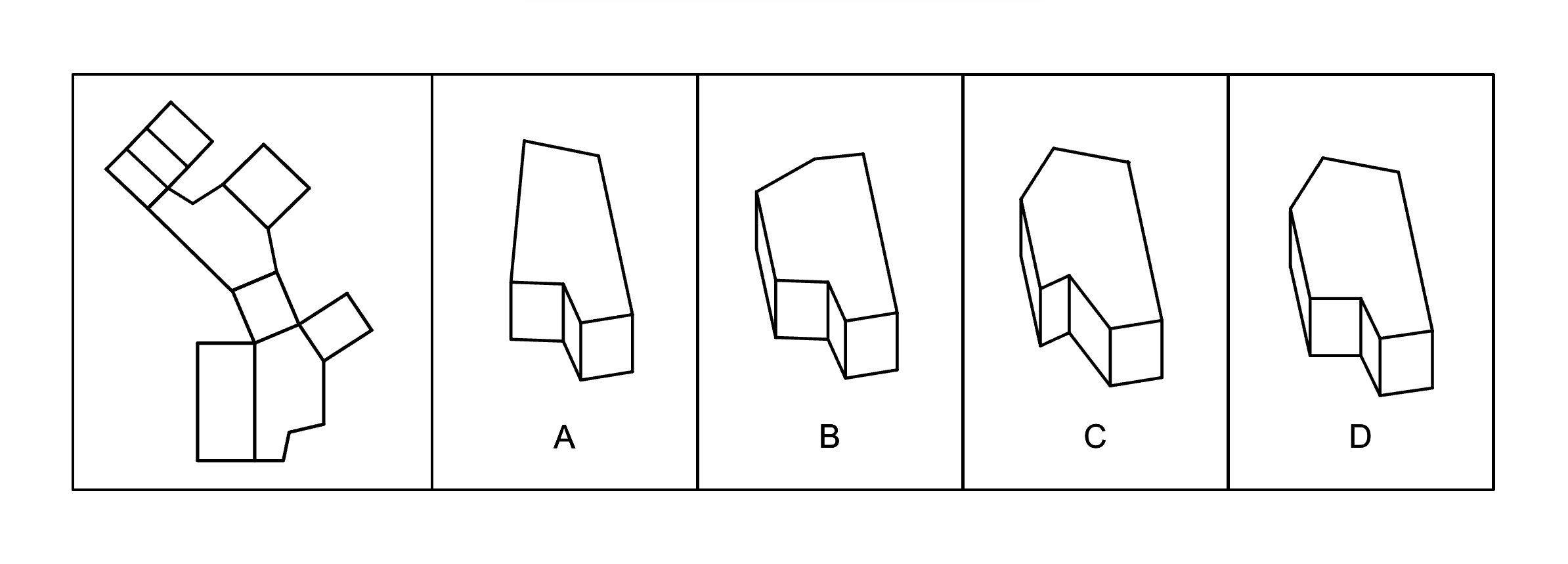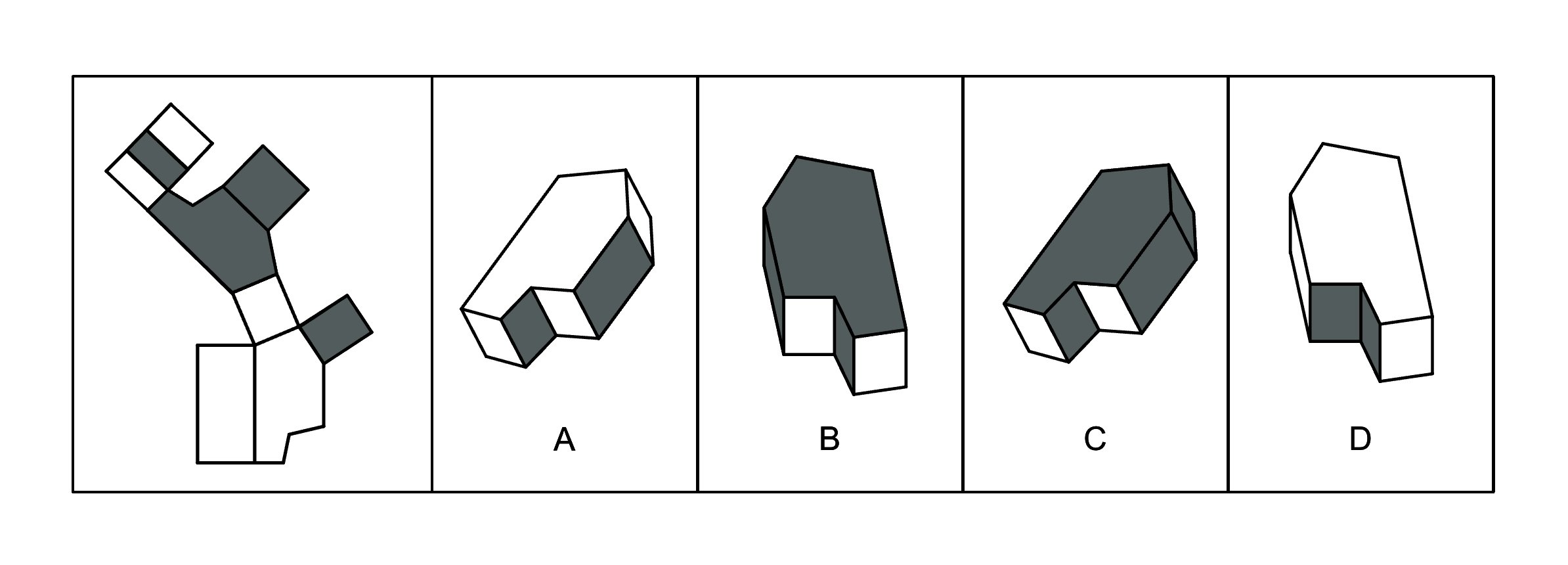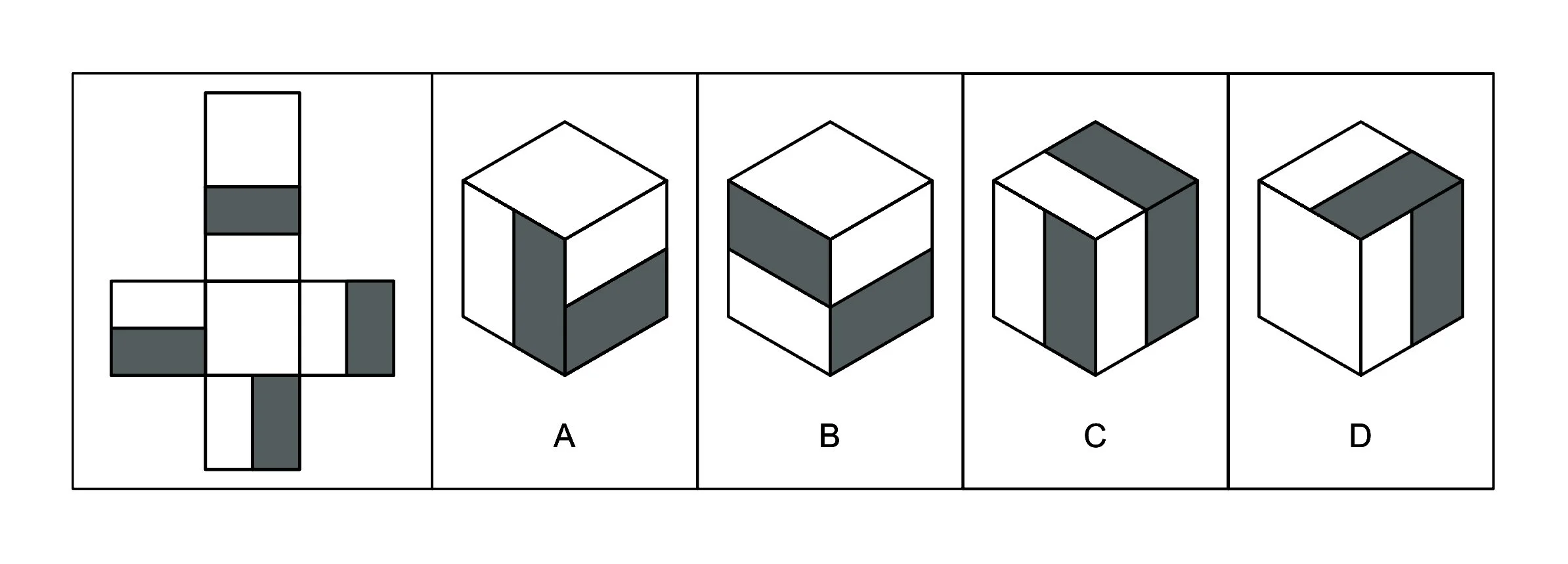Spatial Relations for the DAT (Pattern Folding)
/Learn key pattern folding strategies, plus practice questions and answers
Learn everything you need to know about spatial relations for the dat
----
Part 1: Introduction to spatial relations
The spatial relations section is the sixth and final section of the PAT. Like most of the other PAT topics, this section can be challenging at first. You are required to determine which 3D object will be formed from a flat, unfolded image. This guide will teach you how these questions work, as well as effective strategies to ace them. Practice using these strategies with questions and answers at the end of the guide.
----
Part 2: Rules and strategies
This section is commonly referred to as the pattern folding section. This is because the questions are essentially just that: folding patterns and deducing the correct structure from the unfolded image. As with every other PAT section, there will be 15 questions in the spatial relations section. If you budget your time equally, you should have 10 minutes to answer these questions.
Let’s look at a simple example:
The box on the left shows the 2-dimensional, unfolded image. Each of the shapes in the left image is a face of a 3-dimensional object. Your task is to determine what the 3D object will look like. This image shows a square surrounded by 4 isosceles triangles. The left image will be folded along the solid lines connecting each shape. This means that each triangle will be folded along its base where it connects to the square. These 2D shapes will form a square pyramid, as depicted in answer choice A. This question is much simpler than most pattern folding questions, but it should help you gain a base level understanding of this section.
One rule to know for this section is that the unfolded image/paper is folded into the screen. If the image were folded out of the screen, you would end up with a mirror image of the correct answer choice.
The questions for this section consist of a few distinct types. The first type of questions you’ll encounter are similar to the previous practice question. All faces of the object will be white or unshaded, and you’ll simply be tasked with determining the shape of the 3D object from the 2D image. For these questions, each answer choice will be a different shape.
The next type of question is similar, but parts of the 2D image are shaded. This means that the 3D object will have shaded sides that correspond to the 2D image, such as in the practice question below. Note that sides may be fully or partially shaded. Typically, the answer choices for this type of question are all the same shape, and you only need to determine the location and orientation of the shaded sides. That is not always the case, however, so be sure to always check the shape of the 3D object.
For the question above, the shape of each answer choice is the same, and answer choice B is correct.
A third type of pattern folding question tests your ability to fold cubes. For these questions, each answer choice is cube shaped. Similar to the previous question type, you must determine the orientation and location of the pattern that appears on each cube face. This pattern may be shaded, such as in the example below, or it may be a numbered die.
For this question, answer choice A is correct.
Although this section is difficult at first, there are proven strategies that you can use for each of these types of questions.
The first strategy you can use is identifying unique face shapes. This strategy does not apply to cube questions (or any other question where the answers are the same shape), but is very effective on the other question types. Start by identifying one unique, abnormal shape in the 2D image. Then, look through the answer choices and determine which choice has this unique shape. If multiple answer choices contain this shape, choose another abnormal shape and repeat the process until you have eliminated all but one answer choice. Let’s use this strategy on one of the previous problems. Start by identifying a single unique face from the 2D image.
Now, look at the answer choices and eliminate any that do not contain the same shape that you previously identified. For this problem, the unique shape will be the top and bottom of the object on the right. In fact, this is one of the only ways to differentiate these answer choices. Eliminate options A, B, and C. Option D as the correct answer.
Another effective strategy applies to questions with shaded faces. This strategy involves identifying which (if any) shaded faces are next to each other. In the example below, the 2D image shows a shaded pentagon with two half-shaded squares attached to it. Questions like these try to trick you by changing the position or pattern of the half-shaded squares. Notice that the half-shaded squares have 2 sides that are shaded and 2 sides that are not shaded. Now, see how these shaded sides are attached to other shaded shapes or sides. In the 2D image, the shaded pentagon shares a border with the shaded side of both squares.
Gain instant access to the most digestible and comprehensive DAT content resources available. Subscribe today to lock in the current investments, which will be increasing in the future for new subscribers.






